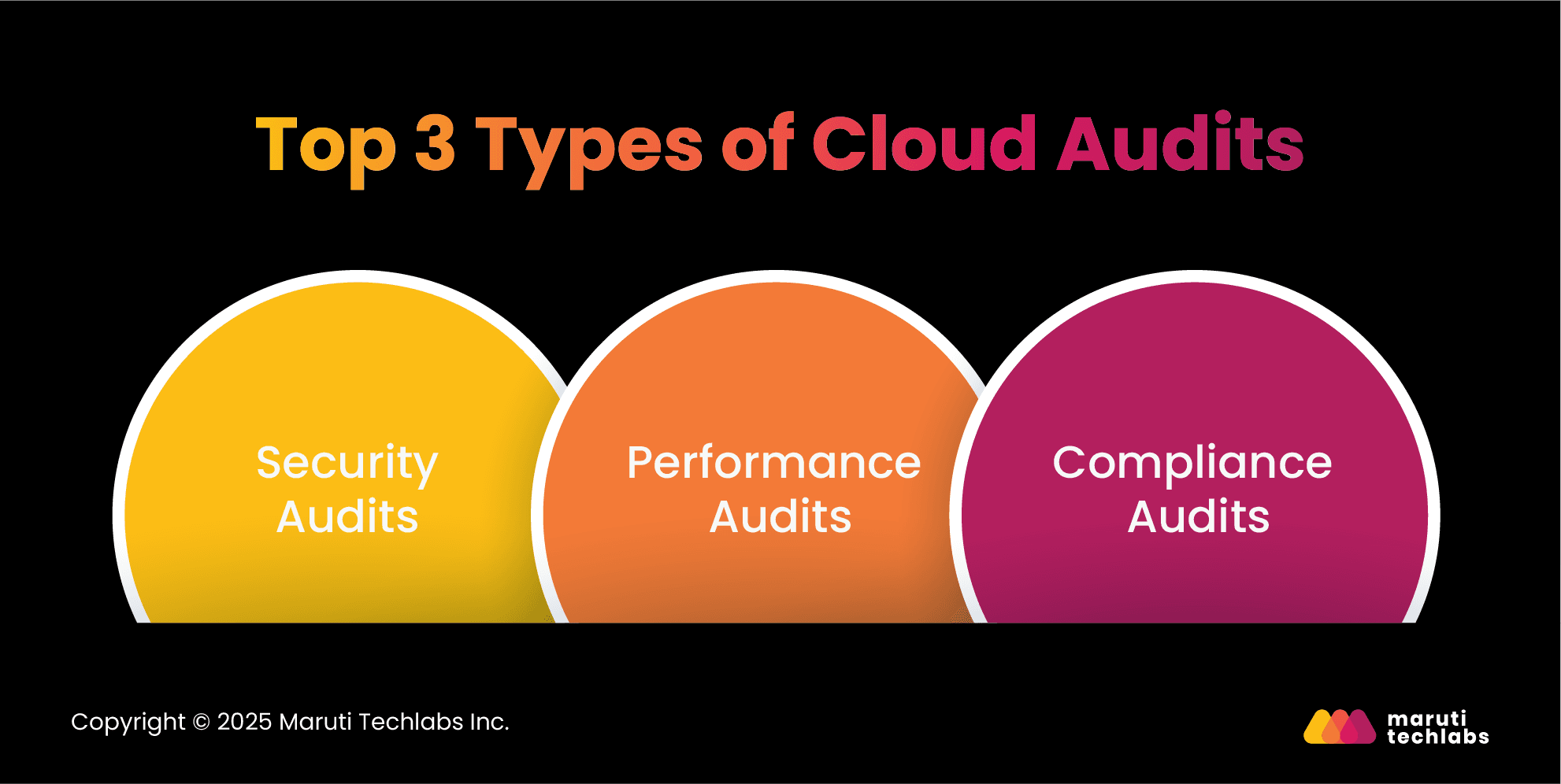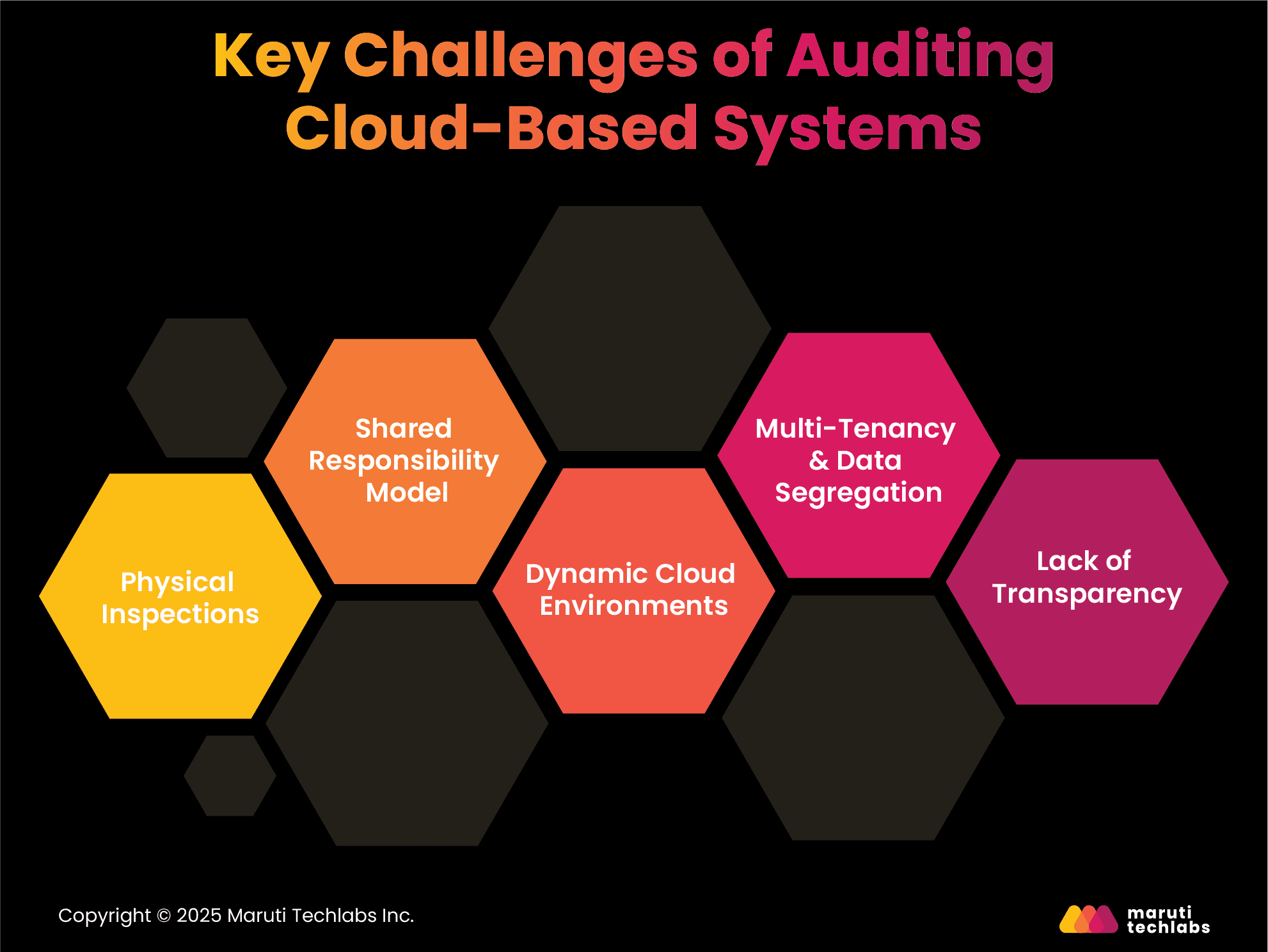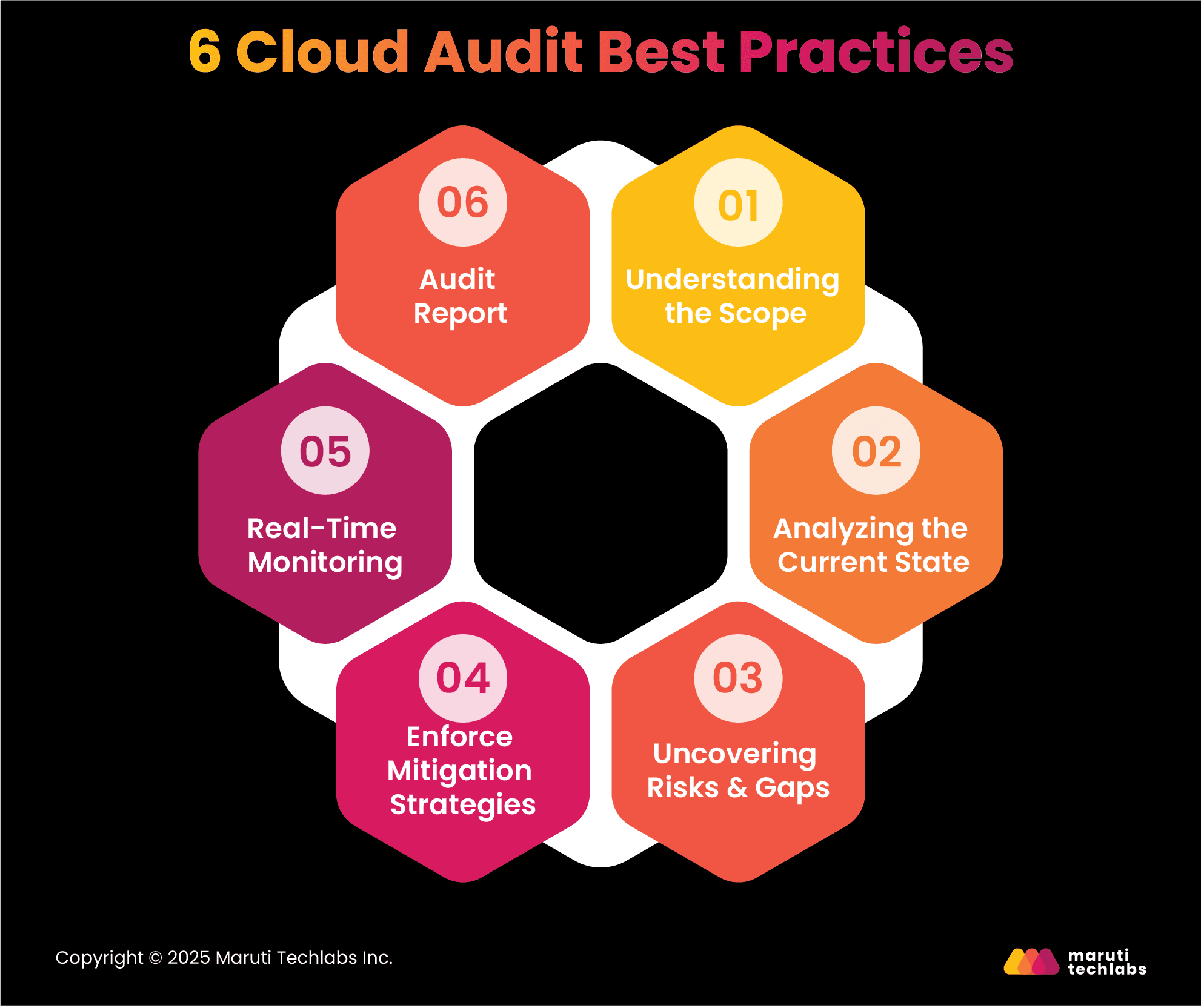

Fundamentals of Cloud Audit: Challenges and Best Practices






It’s evident that in 2025, bits are the rulers of the digital realm. Cybersecurity Ventures predicts that public, private, and government-owned cloud storage will reach 100 zettabytes by 2025, i.e., equivalent to 50% of the world’s data.
When the stakes are this high, managing such high volumes of data on the cloud is crucial for deriving value from your investments and ensuring adequate security. A simple way to do this is to perform regular cloud audits.
Cloud audits are the perfect way to ensure the integrity and confidentiality of your cloud’s data and services while maintaining compliance. This blog explores the types, benefits, challenges, and best practices for cloud audits.
A cloud audit is a chronological review of a company’s cloud infrastructure, security, and compliance. It aims to thoroughly examine a cloud provider's security practices, data access controls, and risk mitigation strategies.
Cloud audits can be conducted internally or externally. Internal audits are conducted by a company’s cloud professionals, who evaluate their security policies, procedures, and resources. External audits are assessments performed by third-party experts in cloud security and compliance.
Given cloud environments' dynamic and distributed nature, comprehensive cloud audits have become the need of the hour. Traditional audits manage the physical and logical controls of an on-premise infrastructure.
Cloud audits encompass many verticals, such as the divided responsibilities between customers and cloud providers, scalability, and security risks. Nearly 65% of 3000 respondents to a 2024 Thales Global Data Threat Report identify cloud security as a top current and future priority. In addition, 72% consider it a future concern.

Here are the three main types of audits that are crucial for cloud migration.
A security audit shields businesses against unauthorized access and data breaches. They ensure:
They ensure all services and performance metrics crucial to business operations are adhered to. Performance audits analyze different facets of cloud environments to ensure efficiency and reliability.
Compliance audits assure clients that their cloud services meet legal and regulatory requirements. This is imperative to avoid any legal issues post-migration. Some of these compliances include risk management and governance (ISO & NIST), data privacy and protection (GDPR & CCPA), and access management (HIPAA).
Conducting regular cloud audits is a necessity for all organizations. A thorough audit can render the following benefits to businesses in the long run.
Timely audits help organizations identify potential threats, vulnerabilities, and areas of improvement in their cloud’s performance, security, compliance, and reliability. This assists them with implementing mitigation strategies before these threats become a reality. It also helps them learn the effectiveness of their strategy and revamp them as required.
Customers using your services expect their financial and personal data to be safe and compliant with relevant standards. Conducting private cloud audits and sharing certifications with customers helps inculcate trust. It also showcases a company’s willingness to adhere to best practices. Subsequently, this process adds to an organization's reputation, loyalty, and retention.
Cloud investments can produce a lot of waste regarding resources and costs. A comprehensive audit can offer invaluable insights into the efficacy and performance of infrastructure, platforms, and applications. This helps companies eliminate inefficiencies, waste, and redundancy within their cloud environment.
Transitioning to the cloud or making new enhancements to your current cloud settings isn’t easy. Here are the challenges that one can encounter when auditing cloud-based systems.
On-premise hardware and infrastructure can always be monitored physically. However, this isn’t the case with the cloud. As the cloud infrastructure and environment are owned and maintained by cloud service providers, physical inspection is impossible for auditors. Without physical inspections, the security and integrity of infrastructure can be compromised.
Cloud providers typically follow the shared responsibility model. This model observes a practice where customers and cloud providers handle the different security aspects. This division makes it cumbersome for auditors to learn if both parties adhere to their obligations and maintain adequate security.

Different cloud resources can be allotted and decommissioned on demand, making the cloud environments highly dynamic. This constant commissioning and de-provisioning of resources make it difficult to maintain an inventory and ensure optimal security in real-time.
Cloud providers offer the multi-tenancy option, where different customers utilize the same infrastructure. This poses a security risk, demanding adequate data segregation between tenants to maintain security and compliance. In addition, it makes verification difficult for auditors.
Cloud providers have limited visibility into their infrastructure and operations. This makes it challenging for auditors to assess the effectiveness of security controls and potential vulnerabilities.
Here is a list of best practices that can assist companies with conducting a thorough cloud audit.
The first step is to fully understand the scope of the audit, its timeline, and the necessary resources and tools. Your scope should be aligned with your business strategies and regulatory requirements to conduct an efficient and effective audit. This focused approach helps you observe results that are congruent with your vision.
It’s essential to know your current cloud environment. This paints the right picture of learning the necessities per your defined scope.
To begin with, you can make a list of all assets, such as databases, applications, servers, and data. Learning the data flows and underlying configuration of these assets helps auditors better identify issues and areas for improvement.
The next step is discovering the security risks that make your cloud environment vulnerable. This encapsulates non-technical risks like human error, technical misconfigurations, and unpatched systems.
According to the Thales study, 65% of respondents identify cloud security as a current concern. To diligently address security risks and potential weaknesses in the cloud, auditors should leverage a mix of automated scanning tools, manual review, and penetration testing.

Enforcing mitigation measures includes access management, network segmentation, incident response procedures, and data encryption. Implementing all the above measures together can be cumbersome. Therefore, it’s best to choose and prioritize calculating their risk score and impact on the organization.
An auditor’s job doesn’t end with implementing control measures. Real-time monitoring is crucial to ensure your cloud environment stays secure and compliant. To quickly be notified and respond to threats or compliance problems, one must have security information, event management (SIEM), intrusion detection, and log analysis tools in place.
The last step in a cloud audit is preparing a comprehensive report that includes your findings, inferences, and recommendations. The report should consist of a summary and be presented to stakeholders like IT teams, management, and compliance officers. After concluding your audit, you must plan and execute follow-ups while scheduling future audits to examine its effectiveness.
Cloud audits are the key to ensuring your budget is spent on the right cloud provider, offering perfect security and necessary compliance. However, performing these audits can be confusing and complicated, and errors may have dire consequences.
The best practices outlined in the blog can help you fully understand your needs, discover risks and gaps, and enforce mitigation strategies.
Consider partnering with a cloud consulting company like Maruti Techlabs to make this process easier and quicker.
Our comprehensive cloud audit services can provide a detailed report of your cloud environment in 2 weeks. Our experts conduct a 360-degree examination of your cloud ecosystem and suggest ways to enhance your performance and security while eliminating waste or underutilized resources. These audits are further strengthened by our specialized cloud security services, designed to address vulnerabilities and ensure compliance across your cloud infrastructure.
Don’t worry about your cloud audit. Contact us today, and we’ll do the work for you.
To audit a cloud environment assess security controls, data encryption, identity management, and access policies. Review compliance with standards, monitor logs for anomalies, evaluate backup strategies, and ensure proper resource allocation, cost optimization, and incident response procedures.
To access audit logs in Strata Cloud Manager, navigate to Settings > Audit Logs. Here, you can view user-initiated actions, including changes made, the responsible user, date and time, and descriptions. To refine your search, use filters for date range, user, category, and change type.
To audit AWS - review IAM roles, policies, and permissions. Examine CloudTrail logs for user activities, assess CloudWatch for resource monitoring, and analyze GuardDuty alerts. Verify data encryption, backup policies, and security groups and ensure compliance with AWS best practices.


